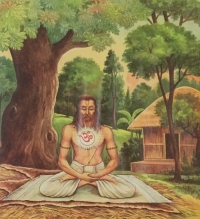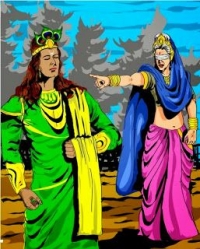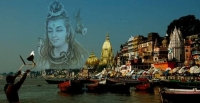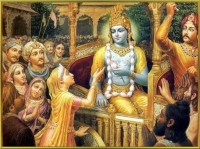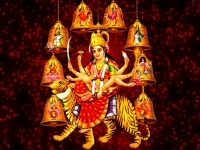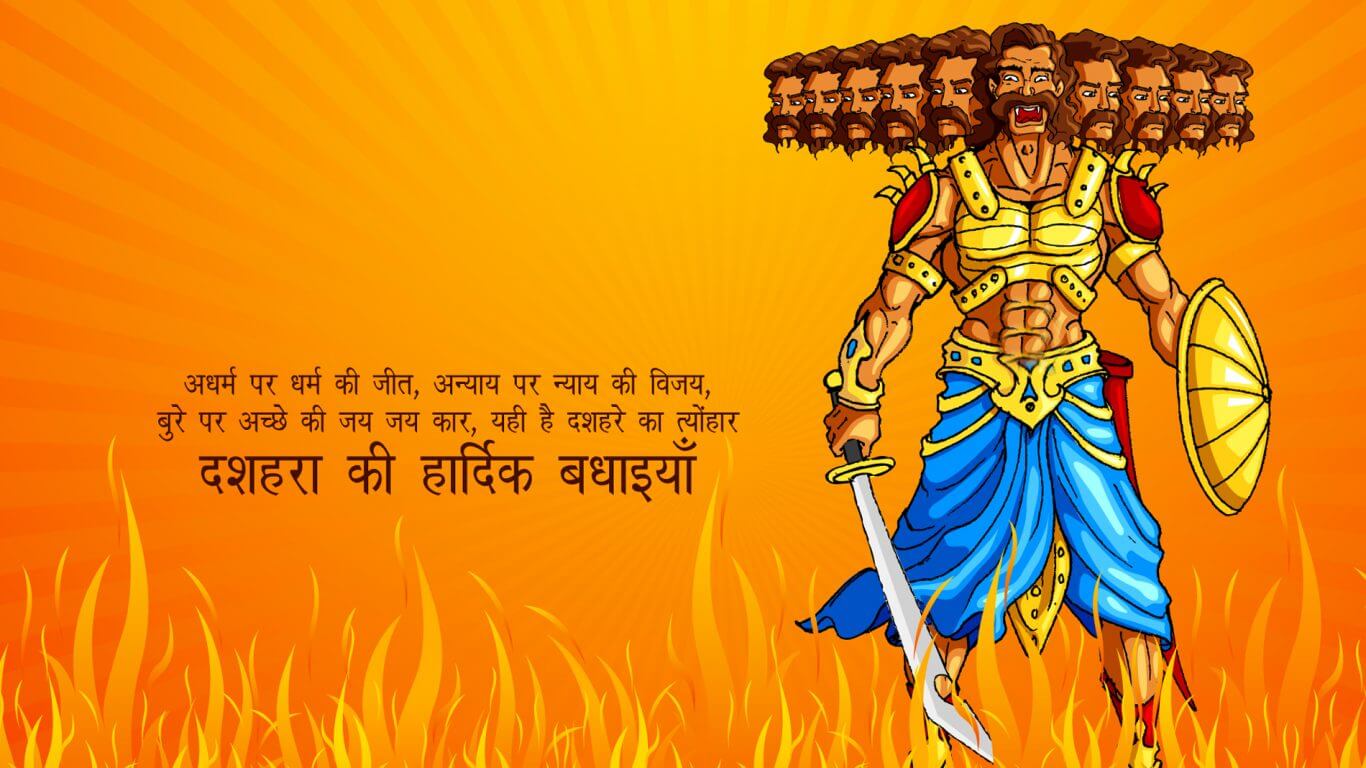
Vijayadashami(Dussehra)
Vijayadashami ( pronounced also known as Dasara, Dusshera or Dussehra is a major Hindu festival celebrated at the end of Navratri every year. It is observed on the tenth day in the Hindu calendar month of Ashvin, which typically falls in the Gregorian months of September and October. Vijayadasami is observed for different reasons and celebrated differently in various parts of the Indian subcontinent. In the eastern and northeastern states of India, Vijayadashami marks the end of Durga Puja, remembering goddess indi victory over the buffalo demon to help restore Dharma. In the northern, southern and western states, the festival is synonymously called Dussehra (also spelled Dasara, Dashahara). In these regions, it marks the end of "Ramlila" and remembers god Rama's victory over the demon Ravana, or alternatively it marks a reverence for one of the aspects of goddess Devi such as Durga or Saraswati. Vijayadasami celebrations include processions to a river or ocean front that carry clay statues of Durga, Lakshmi, Saraswati, Ganesha and Kartikeya, accompanied by music and chants, after which the images are immersed into the water for dissolution and a goodbye. Elsewhere, on Dasara, the towering effigies of Ravana symbolizing the evil is burnt with fireworks marking evil's destruction. The festival also starts the preparation for one of the most important and widely celebrated Diwali, the festival of lights, which is celebrated twenty days after the Vijayadashami.
What Do People Do?
.png)
Many people of the Hindu faith observe Dussehra through special prayer meetings and food offerings to the gods at home or in temples throughout India. They also hold outdoor fairs (melas) and large parades with effigies of Ravana (a mythical king of ancient Sri Lanka). The effigies are burnt on bonfires in the evening. Dussehra is the culmination of the Navaratri festival. There are many local celebrations in some areas in India that can last for up to 10 days. Local events include: Performances of the Ramlila (a short version of the epic Ramayana) in Northern India. A large festival and procession including the goddess Chamundeshwari on a throne mounted on elephants in the town of Mysore in the state of Karnataka. The blessing of household and work-related tools, such as books, computers, cooking pans and vehicles in the state of Karnataka. The preparation of special foods, including luchi (deep fried flat bread) and alur dom (deep fried spiced potato snacks), in Bengal. Many Hindus also believe that it is lucky to start a new venture, project or journey on Dussehra. They may also exchange gifts of leaves from the Shami tree (Prosopis spicigera) as a symbol of the story of the Pandavas brothers' exile in the Mahabharata stories.
Background
Dussehra celebrates the Hindu god Rama's victory over the demon king Ravana and the triumph of good over evil. The epic Ramayana tells the story of the Lord Rama who wins the lovely Sita for his wife, only to have her carried off by Ravana, the demon king of Lanka. Ravana plays an important role in the Ramayana. Ravana had a sister known as Shoorpanakha. She fell in love with the brothers Rama and Lakshamana and wanted to marry one of them. Lakshamana refused to marry her and Rama could not as he was already married to Sita. Shoorpanakha threatened to kill Sita, so that she could marry Rama. This angered Lakshamana who cut off Shoorpanakha's nose and ears. Ravana then kidnapped Sita to avenge his sister's injuries. Rama and Lakshamana later fought a battle to rescue Sita. The monkey god Hanuman and a huge army of monkeys helped them. The Mahabharata is another series of Hindu stories that play a role in the Dussehra festival. The Pandavas were five brothers who fought evil forces with a set of distinctive weapons. They abandoned their weapons and went into exile for one year. They hid their weapons in a Shami tree and found them at the same place when they returned from exile. They then worshipped the tree before going to a battle, which they won. This epic is also commemorated during Dussehra.
Celebrations of Dussehra in India:

Dussehra-festival Dussehra is celebrated in a distinct way with great fervor across the nation. The different methods of celebrating this festival in different regions are: Celebrating Dussehra in North India: Dussehra is normally celebrated by flaming the effigies of Ravana, Meghanatha and Kumbhakarna. With this burning, the play Ramleela, displaying the story of Ramayana, also comes to an end. Generally, a fete is also organized for the people. Three individuals enacting Rama, Lakshamana and Sita sitting on a chariot, pass through the crowd. The artist performing Rama’s role aims the arrow in order to burn all the three effigies separately. Celebrating Dussehra in South India: Dussehra is celebrated in a distinctive manner in the Southern part of India. On this festive day, toys and dolls are decorated in all the houses. This ritual had commenced from the abode of emperors in erstwhile era. This day is popular as Gombe Habba in South India. In olden times, Dussehra was limited to the well-off people. However, it gained regard with time and reached to the common people as well. Celebrating Dussehra in Gujarat- The people of Gujarat assemble and dance on each night during Navaratri. Several competitions are held on the Dussehra festival and men and women perform a unique Gujarati dance ‘Garba’ on devotional songs. This dance continues till late night. In various places, this dance continues even till the break of dawn. Women put on their best clothes and decorate earthen pots wonderfully. In Mysore, several fairs and cultural performances are organized. The grand parade of bedecked elephants and guards sitting on a horseback, escort the idol of Goddess through the city. This parade is the major highlight of the ten-day celebration of Dussehra in Mysore. In Kullu, chariots are decorated with amazing hues. Goddess deities are taken around on these beautiful chariots and people dance with joy and elation to rejoice the festive day of Dussehra.

